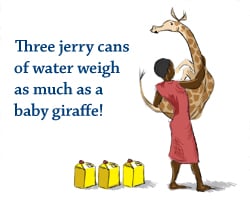Worried about throwing out your used bras lest they be stolen by perverts? American women may find such fears unwarranted, but they’re genuine concerns for their counterparts in Japan, according to the Japan Times. Responding to those anxieties, as well as growing concerns about the environment (which might be more relatable for us Western gals), Triumph International is accepting used bras in select Japanese stores for recycling into boiler and power-generating fuel. The initiative not only saves these unmentionables from landfills, it also relieves Japanese women of a constant source of distress. A 2004 survey by major lingerie-maker Wacoal found that 61 percent of respondents hesitate to throw their old bras out with the trash because many municipalities require clear garbage bags.
WONDER BRAS
While underwear end-of-life disposal isn’t a subject on most people’s minds, it’s interesting to note that bras are one of hardest types of garments to recycle. Think about it: They don’t have resale appeal at thrift shops—unless you’re really, really hardcore about your secondhand shopping, that is—and they’re usually made from a blend of fabric and wire that’s impossible to tease apart for repurposing. These obstacles make it so difficult to recycle bras, in fact, that turning them into refuse-paper-and-plastic fuel (RPF) is the only viable option, according to the Japan RPF Association.
Made from a mix of waste paper, plastic, and fibers, RPF generates less carbon dioxide than coal while costing only a fourth as much
The organization notes that RPF contains fewer impurities and less water than refuse-derived fuel made from household garbage. Besides releasing very little dioxin when incinerated, RPF also boasts a combustion efficiency comparable with coal. Made from a mix of waste paper, plastic, and fibers, the fuel also generates less carbon dioxide than coal while costing only a fourth as much.
By distributing bags at stores across Japan for women to fill with their unwanted skivvies, Triumph has collected more than 200,000 bras and produced over 14 tons of RPF since 2009. But it’s not the only bra-maker taking on the cause. Wacoal isn’t far behind, with more than 179,200 bras and 17.9 tons of the fuel to its credit.
WONDER BRAS
While underwear end-of-life disposal isn’t a subject on most people’s minds, it’s interesting to note that bras are one of hardest types of garments to recycle. Think about it: They don’t have resale appeal at thrift shops—unless you’re really, really hardcore about your secondhand shopping, that is—and they’re usually made from a blend of fabric and wire that’s impossible to tease apart for repurposing. These obstacles make it so difficult to recycle bras, in fact, that turning them into refuse-paper-and-plastic fuel (RPF) is the only viable option, according to the Japan RPF Association.
Made from a mix of waste paper, plastic, and fibers, RPF generates less carbon dioxide than coal while costing only a fourth as much
The organization notes that RPF contains fewer impurities and less water than refuse-derived fuel made from household garbage. Besides releasing very little dioxin when incinerated, RPF also boasts a combustion efficiency comparable with coal. Made from a mix of waste paper, plastic, and fibers, the fuel also generates less carbon dioxide than coal while costing only a fourth as much.
By distributing bags at stores across Japan for women to fill with their unwanted skivvies, Triumph has collected more than 200,000 bras and produced over 14 tons of RPF since 2009. But it’s not the only bra-maker taking on the cause. Wacoal isn’t far behind, with more than 179,200 bras and 17.9 tons of the fuel to its credit.
Source: <a href=”http://http://www.ecouterre.com/triumph-japan-recycles-old-bras-into-power-generating-fuel/”>Ecouterre</a>.

















